Test Bank Nursing: A Concept Based Approach to Learning, Volume 1 (2nd Edition)
$38.00
Test Bank Nursing: A Concept Based Approach to Learning, Volume 1 (2nd Edition) Download
- Description
- Reviews (0)
Description
You will receive this product immediate after placing the order
Your purchase is anonymous, private and secure. We have a zero log policy. This means we do not store any information whatsoever. Learn exactly what you need to know in the class you are taking. Learn how to acquire important knowledge. Learn how to increase and boost your GPA. This is a simple step to reverse overwhelming circumstances you may be experiencing in your nursing school. Restore your dream and live free from stress and have more fun. Start getting good grades today, we highly recommend the nursing test bank for Test Bank Nursing: A Concept Based Approach to Learning, Volume 1 (2nd Edition)
*** HERE IS A SAMPLE FOR YOU TO CHECK OUT – NOT THE FULL CHAPTER ***
Nursing: A Concept-Based Approach to Learning, 2e (Pearson)
Module 2 Cellular Regulation
The Concept of Cellular Regulation
1) The nurse is teaching a class to prospective parents about the roles that ribonucleic acid (RNA) and deoxyribonucleic acid (DNA) play in the development of the human fetus. The nurse concludes that the parents understand teaching when what is stated by the parents?
Select all that apply.
A) “RNA will determine what color eyes my baby has.”
B) “DNA molecules form the genetic material.”
C) “RNA is the messenger that carries DNA to the ribosomes.”
D) “DNA is outside the nucleus of the cell.”
E) “DNA plays a role in protein synthesis in our bodies.”
Answer: B, C
Explanation: A) DNA molecules form the basic genetic material called genes and contain the information about inherited characteristics. RNA is the messenger that carries DNA to the ribosomes. RNA does not determine the color of the eyes, but is responsible for protein synthesis. Both RNA and DNA are contained within the nucleus of each cell.
B) DNA molecules form the basic genetic material called genes and contain the information about inherited characteristics. RNA is the messenger that carries DNA to the ribosomes. RNA does not determine the color of the eyes, but is responsible for protein synthesis. Both RNA and DNA are contained within the nucleus of each cell.
C) DNA molecules form the basic genetic material called genes and contain the information about inherited characteristics. RNA is the messenger that carries DNA to the ribosomes. RNA does not determine the color of the eyes, but is responsible for protein synthesis. Both RNA and DNA are contained within the nucleus of each cell.
D) DNA molecules form the basic genetic material called genes and contain the information about inherited characteristics. RNA is the messenger that carries DNA to the ribosomes. RNA does not determine the color of the eyes, but is responsible for protein synthesis. Both RNA and DNA are contained within the nucleus of each cell.
E) DNA molecules form the basic genetic material called genes and contain the information about inherited characteristics. RNA is the messenger that carries DNA to the ribosomes. RNA does not determine the color of the eyes, but is responsible for protein synthesis. Both RNA and DNA are contained within the nucleus of each cell.
Page Ref: 30
Cognitive Level: Analyzing
Client Need: Health Promotion and Maintenance
Nursing Process: Evaluation
Learning Outcome: 1. Summarize the physiology of the hematological system related to cellular regulation.
2) A nursing instructor is explaining the term hyperplasia to the class. Which statement, made by a nursing student, indicates an understanding of why hyperplasia occurs with myocardial infarction?
A) “The cells of the muscle experience hyperplasia with the prolonged need for oxygen.”
B) “The cells of the heart are metaplastic in response to muscle damage.”
C) “The cells of the heart muscle have lost fluid.”
D) “The cells of the heart muscle are responding to metabolic needs.”
Answer: A
Explanation: A) Hyperplasia is an increase in density or number of normal cells in response to stress–in this case, the increased demand for oxygen. Cells that lose fluid will shrink in size. The cells of a person’s heart do not enlarge as a metabolic response. Metaplasia is a change in the normal pattern of differentiation of cells.
B) Hyperplasia is an increase in density or number of normal cells in response to stress–in this case, the increased demand for oxygen. Cells that lose fluid will shrink in size. The cells of a person’s heart do not enlarge as a metabolic response. Metaplasia is a change in the normal pattern of differentiation of cells.
C) Hyperplasia is an increase in density or number of normal cells in response to stress–in this case, the increased demand for oxygen. Cells that lose fluid will shrink in size. The cells of a person’s heart do not enlarge as a metabolic response. Metaplasia is a change in the normal pattern of differentiation of cells.
D) Hyperplasia is an increase in density or number of normal cells in response to stress–in this case, the increased demand for oxygen. Cells that lose fluid will shrink in size. The cells of a person’s heart do not enlarge as a metabolic response. Metaplasia is a change in the normal pattern of differentiation of cells.
Page Ref: 32
Cognitive Level: Analyzing
Client Need: Physiological Integrity
Nursing Process: Evaluation
Learning Outcome: 2. Examine the relationship between cellular regulation and other concepts/systems.
3) A nurse is caring for a client who has been diagnosed with skin cancer. Which nursing interventions will reduce the growth of cancer cells and support normal cell function?
Select all that apply.
A) Encouraging mobility and exercise
B) Encouraging increased rest and sleep
C) Assessing normal functioning of organ systems
D) Reducing oxygen supply to retard growth of cancer cells
E) Increasing calorie intake
Answer: B, C, E
Explanation: A) Cancer cells grow faster than normal cells, so they use more nutrients for growth, resulting in wasting, which can only be counteracted by increasing the caloric intake of the client. Increased rest and sleep give the client’s body more energy to fight the cancer cells. Because cancer cells can grow in any area of the body, it is important for the nurse to assess normal functioning of all organ systems. Decreasing oxygen supply will retard cancer cell growth but it will also retard normal cell health. While clients should not be inactive, they should be taught to reduce activity to reduce weight loss and provide more energy to the healthy cells.
B) Cancer cells grow faster than normal cells, so they use more nutrients for growth, resulting in wasting, which can only be counteracted by increasing the caloric intake of the client. Increased rest and sleep give the client’s body more energy to fight the cancer cells. Because cancer cells can grow in any area of the body, it is important for the nurse to assess normal functioning of all organ systems. Decreasing oxygen supply will retard cancer cell growth but it will also retard normal cell health. While clients should not be inactive, they should be taught to reduce activity to reduce weight loss and provide more energy to the healthy cells.
C) Cancer cells grow faster than normal cells, so they use more nutrients for growth, resulting in wasting, which can only be counteracted by increasing the caloric intake of the client. Increased rest and sleep give the client’s body more energy to fight the cancer cells. Because cancer cells can grow in any area of the body, it is important for the nurse to assess normal functioning of all organ systems. Decreasing oxygen supply will retard cancer cell growth but it will also retard normal cell health. While clients should not be inactive, they should be taught to reduce activity to reduce weight loss and provide more energy to the healthy cells.
D) Cancer cells grow faster than normal cells, so they use more nutrients for growth, resulting in wasting, which can only be counteracted by increasing the caloric intake of the client. Increased rest and sleep give the client’s body more energy to fight the cancer cells. Because cancer cells can grow in any area of the body, it is important for the nurse to assess normal functioning of all organ systems. Decreasing oxygen supply will retard cancer cell growth but it will also retard normal cell health. While clients should not be inactive, they should be taught to reduce activity to reduce weight loss and provide more energy to the healthy cells.
Be the first to review “Test Bank Nursing: A Concept Based Approach to Learning, Volume 1 (2nd Edition)”
You must be logged in to post a review.







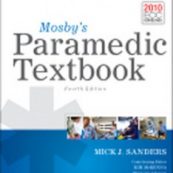
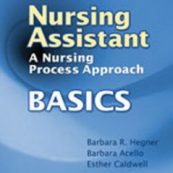
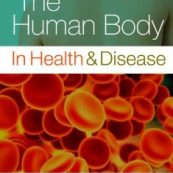
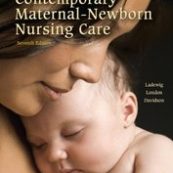
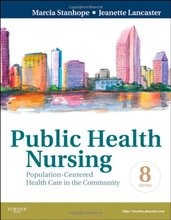
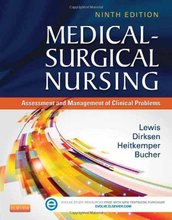
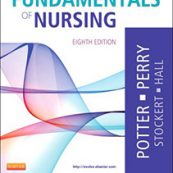
Reviews
There are no reviews yet.